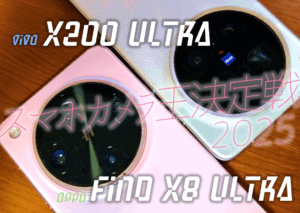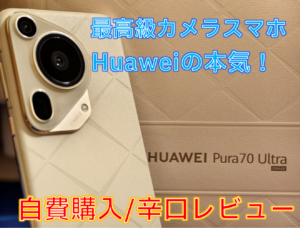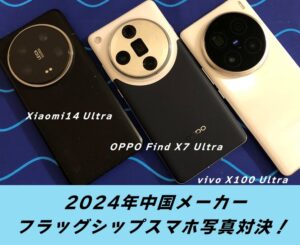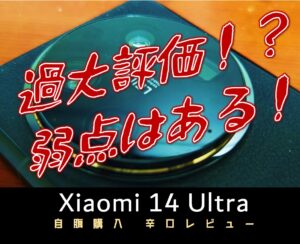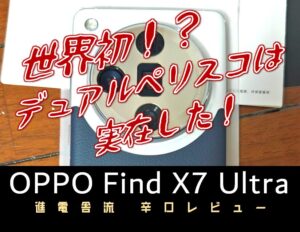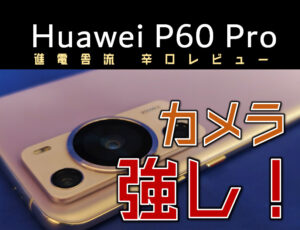This article has been translated from Japanese into English using the translation software. Please understand that there may be a few sentences that are not correct.
The Honor Magic 3 Pro+ was announced on August 12, 2021. As of September 2021, the amount of the device in circulation is very limited, and it is in short supply even in China, making it almost impossible to get one at a fixed price, making it a very high-profile phone even in China. I am very excited about this phone. The first smartphone I ever bought was the Huawei P30 Pro, and I love Huawei. In order to avoid being sanctioned by the US, Huawei spun off its smartphone business into a separate company, Honor, and I thought it would be an amazing phone that incorporates a lot of Huawei’s latest technology! I thought. I got it almost as fast as I could, and I’d like to use it and review it right away! Is it really worth the price?
what is HONOR?

HONOR is written as “荣耀” in Chinese. Originally established in 2013 as a low-cost sub-brand of Huawei, the U.S. sanctioned Huawei to stop trading in SoCs and Google systems from Qualcomm, Samsung and TSMC due to the 2020 trade friction between the U.S. and China. As a result, Huawei was forced to sell Honor, which was originally a brand of low-cost devices. Many of Huawei’s engineers are said to have transferred to Honor, which is said to be the company that will essentially take over Huawei’s smartphone business. The Honor Magic3 series will be equipped with Qualcomm’s cutting-edge 5G SoC, which Huawei’s phones could not. The Honor Magic3 series is equipped with Qualcomm’s latest 5G-compatible SoC, which Huawei’s phones could not be equipped with, and Google System (GMS) has also been officially announced for the global version to be released in the future.
HONOR Magic 3 Pro+ Specifications and Overview
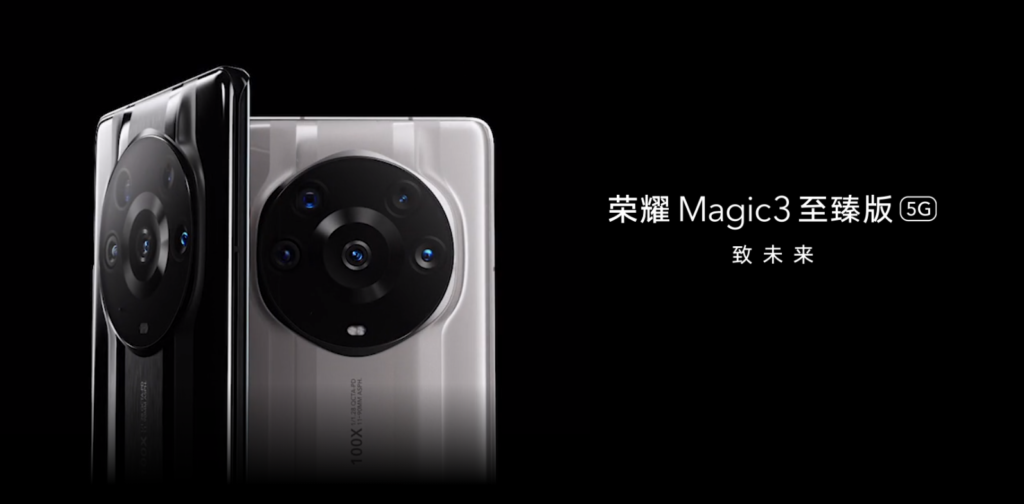
| Release date | Aug.2021 |
| Body size | 162.8×74.9×9.9 (mm) |
| weight | 236g (Very Heavy!!) |
| Display | 6.76 inches OLED 120Hz Refresh Sheet |
| OS | Magic UI 5 (Android11) |
| SoC | Qualcomm Snapdragon 888+ 5G |
| Main camera | 50MP (SONY IMX700 RGGB) f/1.9 1/1.28″ |
| Ultra-wide camera | 64MP (OmniVision OV64B) f/2.4 1/2″ |
| Monochrome camera | 64MP (OmniVision OV64B) f/1.8 1/2″ |
| Telephoto camera | 64MP (OmniVision OV64B) f/3.5 1/2″ 90mm(3.5x) |
| Selfie | 13MP f/2.4 |
| Speakers | Stereo speakers |
| Battery capacity | 4600mAh |
| Charging standard | 66W HONOR Super Charge(SSCP) |
| Supported bands for 5G | n1/n3/n5/n8/n28/n38/n41/n77/n78/n79 |
| Supported bands for 4G | B1/B2/B3/B4/B5/B7/B8/B12/B17/B18/B19/B20/ B26/B28A/B34/B38/B39/B40/B41 |
| ROM/ Storage | ROM 12GB / Storage 512GB |
| Color | Ceramic White/Ceramic Black |
| Water and dust proof | IP68 |
| Price | 7999 CNY(CN Version) / €1499(Global Version) |
It is the first flagship model of HONOR after the standalone from Huawei. It looks almost the same as the Huawei Mate40 RS, with a slight difference in the camera area. The main camera is the IMX700, which was also used in the P40 and Mate40. The main camera uses the same IMX700 sensor used in the P40 and Mate40, but the Magic3 uses a regular RGGB sensor instead of the RYYB array used in the P40 and Mate40. The 3.5x telephoto, monochrome, and ultra-wide angle are each equipped with a 64-megapixel OV64B sensor, which is the only one with four 50MP or higher pixel sensors. The camera also has a ToF sensor. The camera has a 3.5x optical telephoto and a digital zoom of up to 100x. The global version is also expected to have GMS, but as of 9/5/2021, the release date for the global version has not been determined.
Unpacking
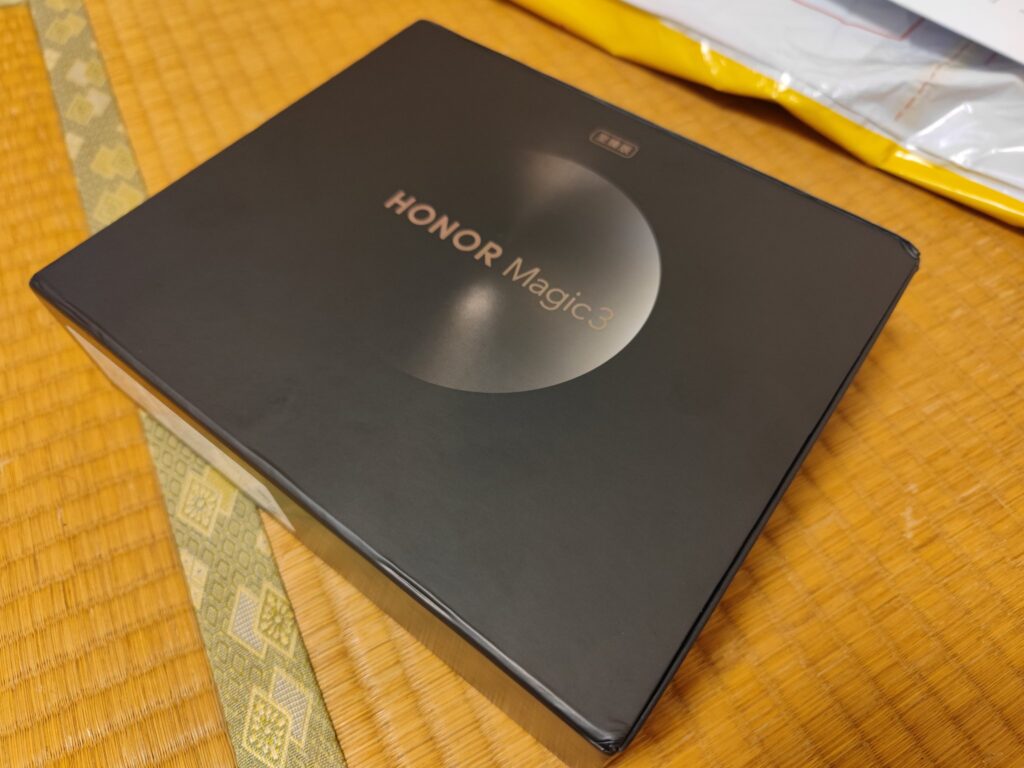
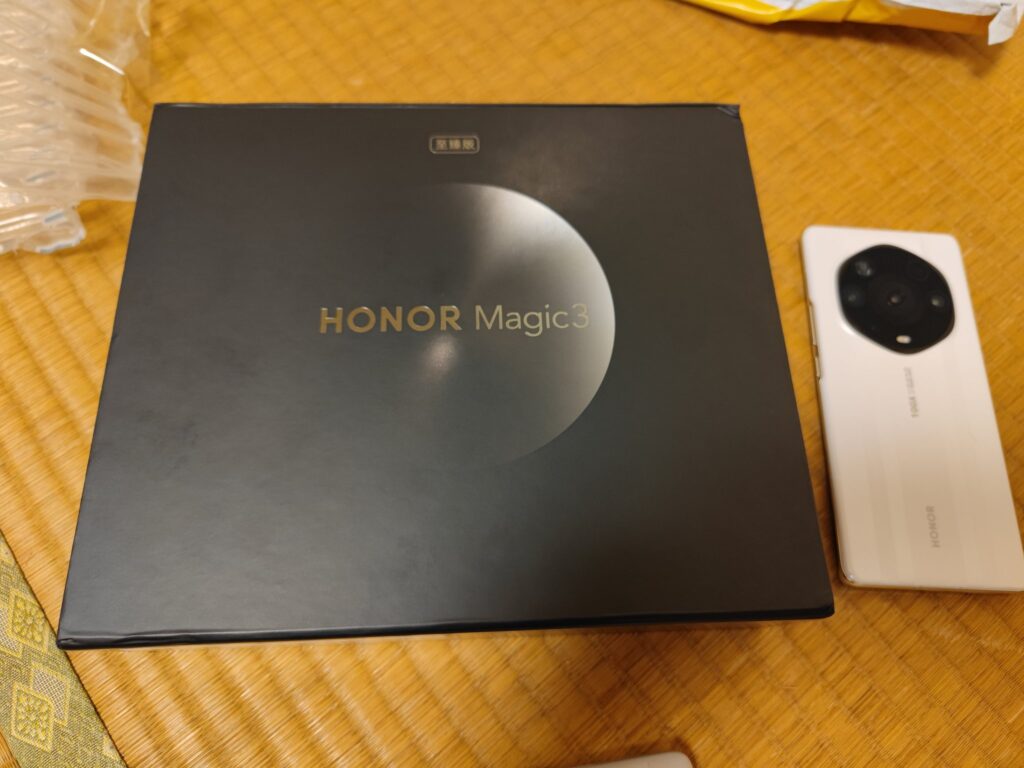
First of all, the box is amazing. It’s the biggest outer box I’ve ever seen for a smartphone. It’s 22cm wide, 18cm long, and 6cm high. Moreover, the lid of this box has a magnet and closes tightly.
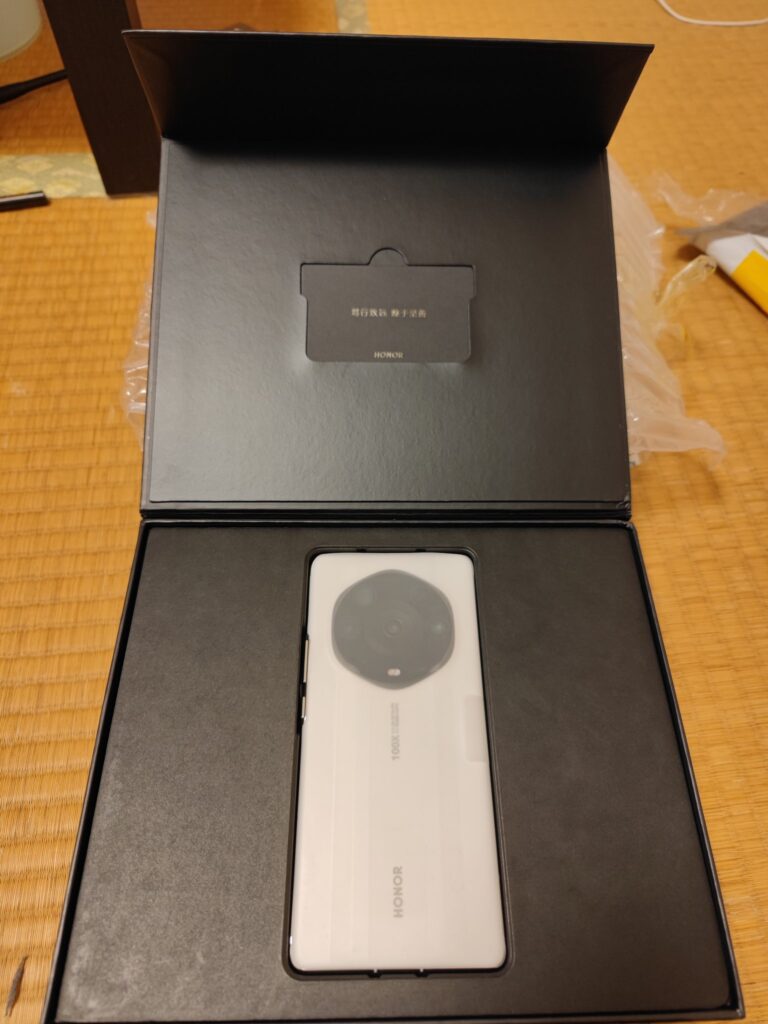
When you open the box, you will see the device in the middle. It’s full of luxury.
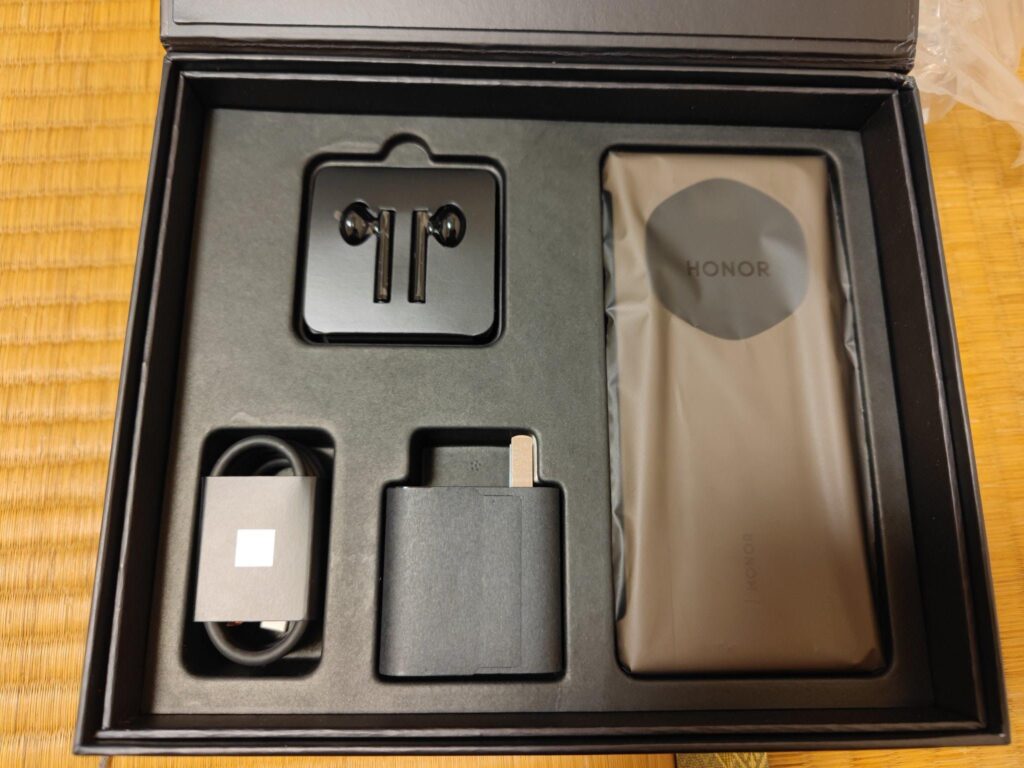
If you take off the top cover that contains the device, you will find the accessories. The genuine case, charger, USB-A-C cable, and earphones are included. There’s also a SIM pin and warranty card under the case. The charger is a Chinese plug, and it is compatible with 100V, so it can be used in Japan where the plug shape is the same. However, it is different from the European plug, so it cannot be used in Europe. I chose white for the main unit, but all the accessories were black. Should I buy a black one for this?
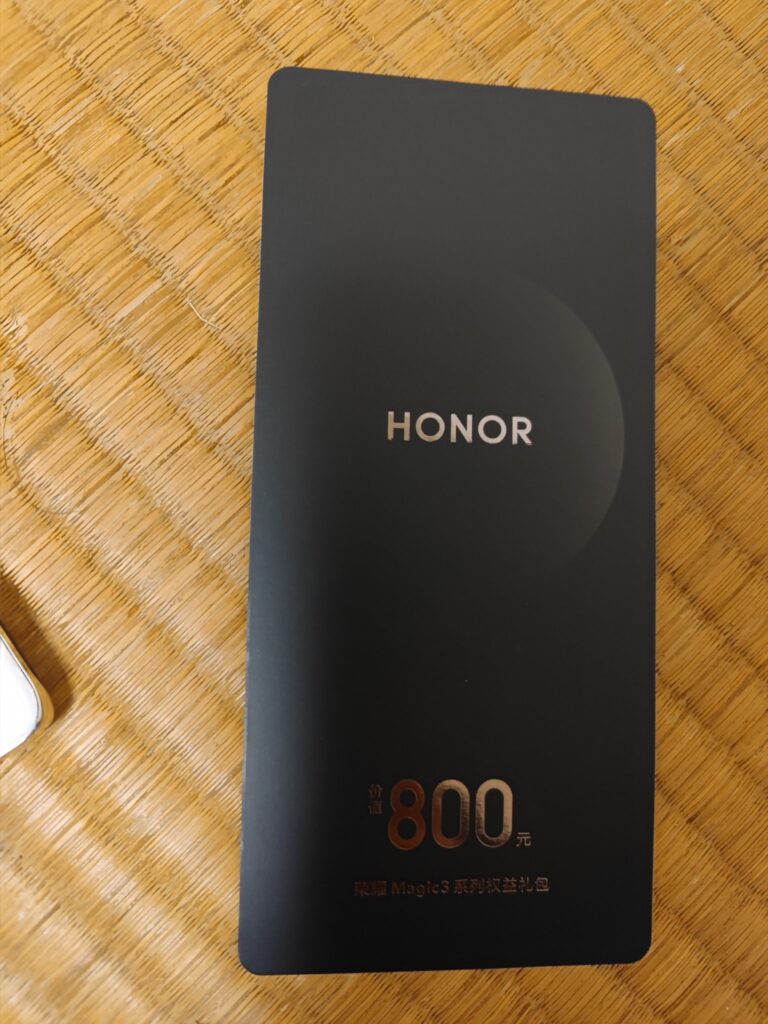
There was a piece of paper under the case that said 800 yuan. Since I don’t understand Chinese well, I don’t know what this 800 yuan means, but could it be a lottery or something to win 800 yuan? There is a QR code on the back, but I haven’t tried it yet. 800 yuan is a pretty big amount of money…
Phone appearance
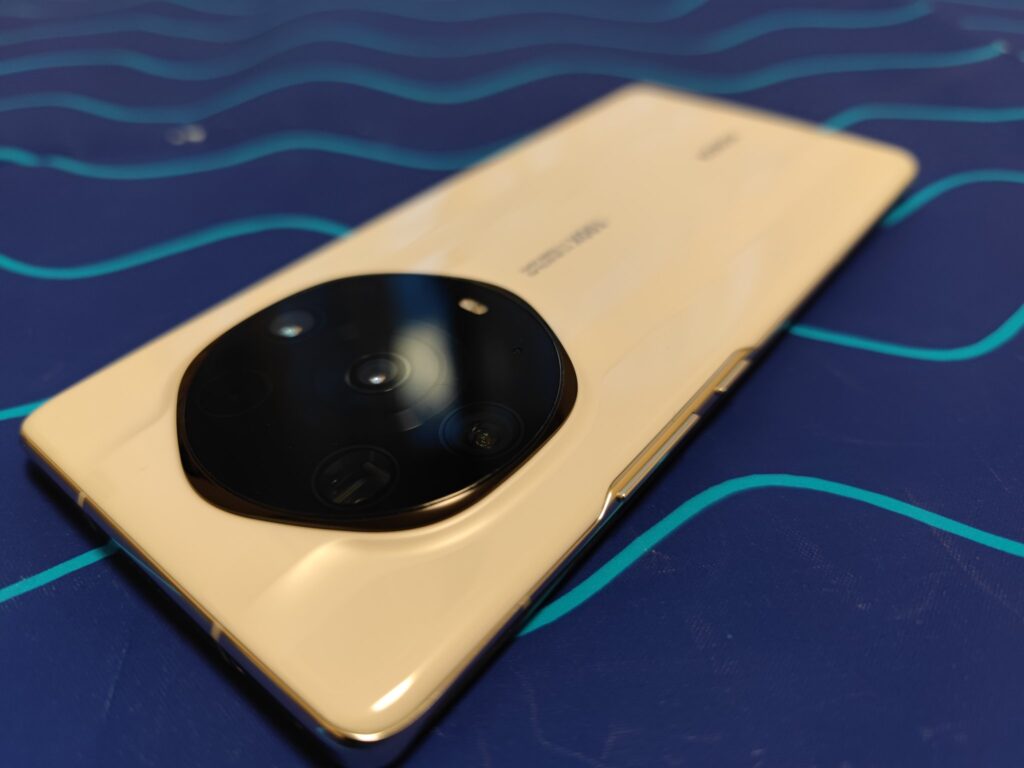
The back is ceramic. The feel and texture are both excellent. However, I heard that ceramic can crack if dropped, so you have to be very careful when handling it…
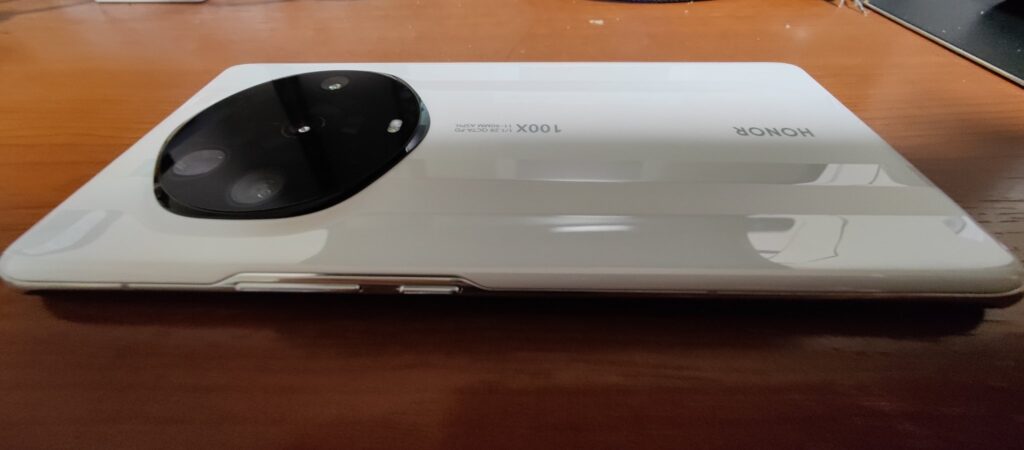
The power and volume control buttons are on the right side facing the display. Both buttons are soft and very comfortable to press. There are no buttons on the left side.
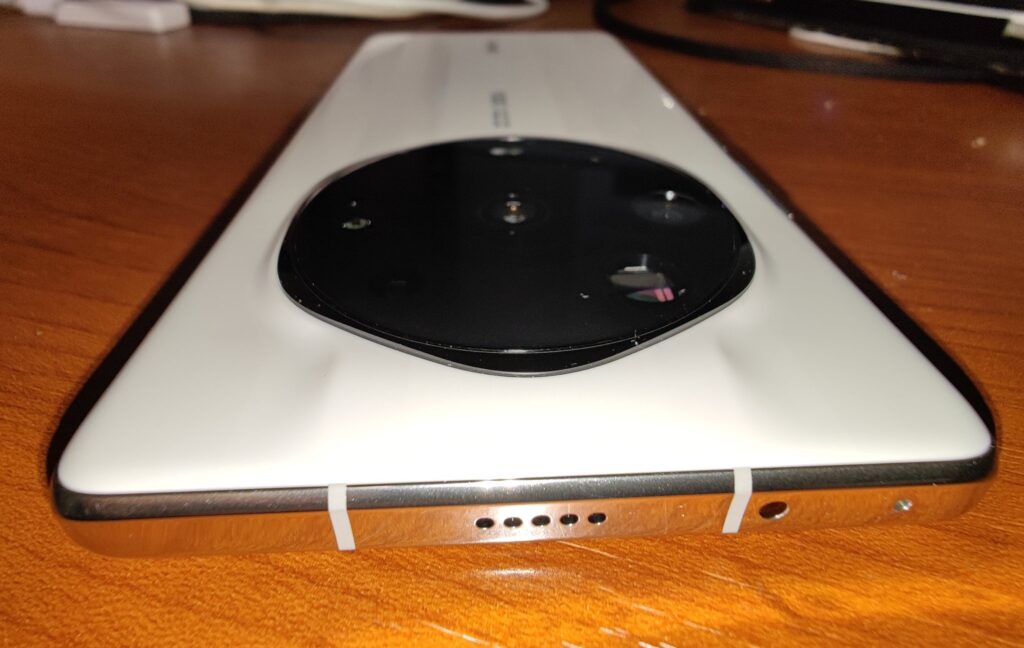
Top of the device. Stereo speakers, so there are also speakers on this side.
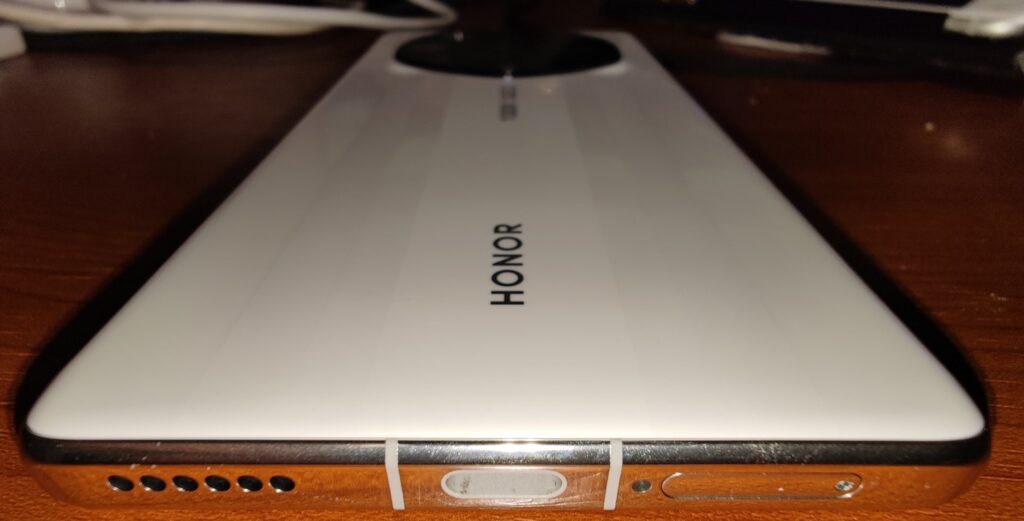
This is the bottom of the device, where the SIM slot and USB-C port reside, and of course the SIM is dual-SIM.
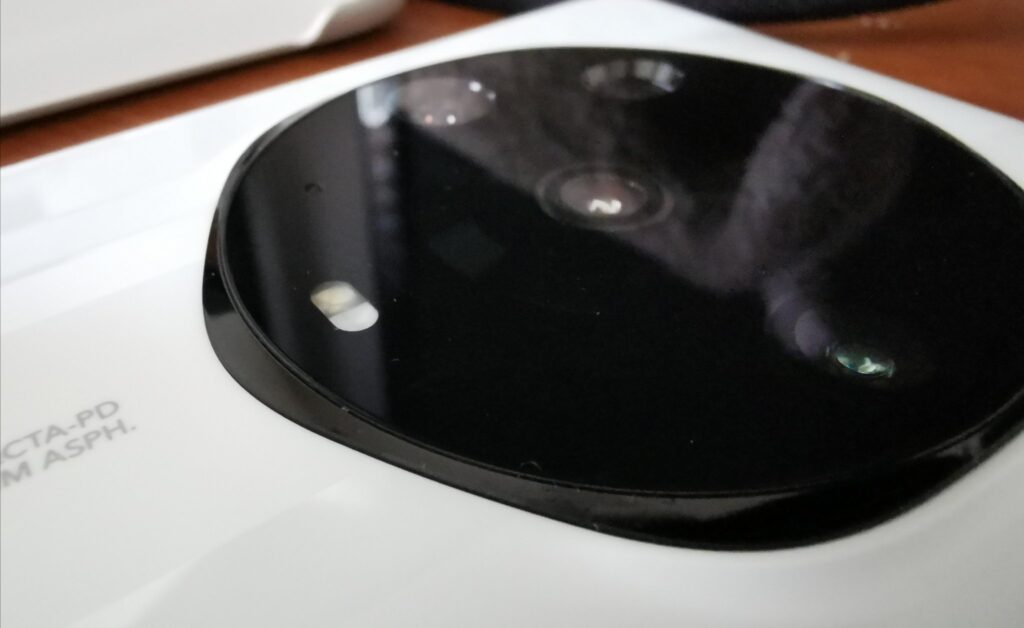
This is the camera area. It has a very complicated shape. It is very stable when placed and I like that very much.
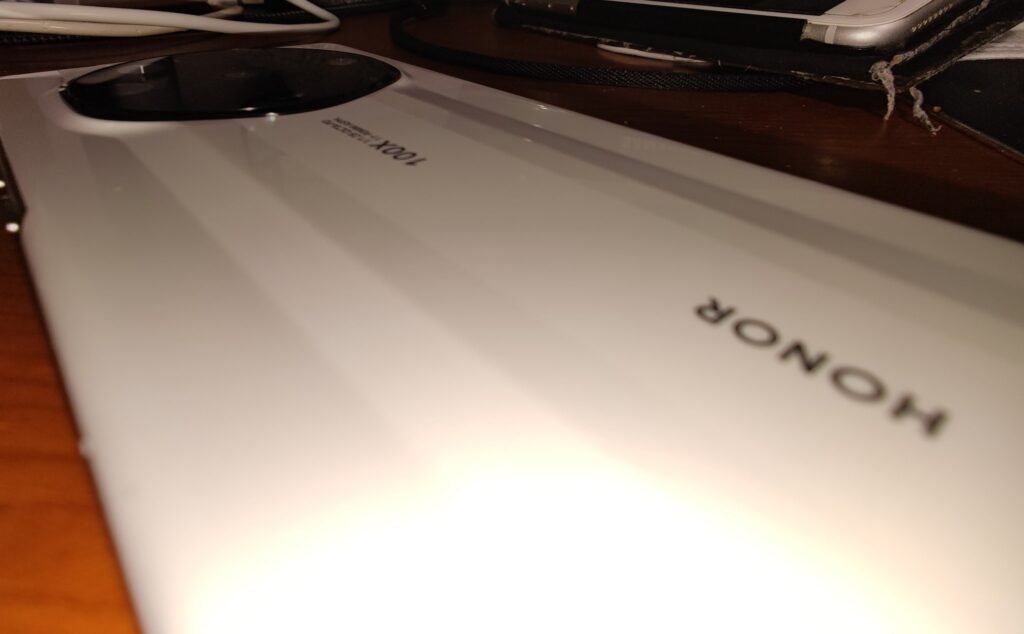
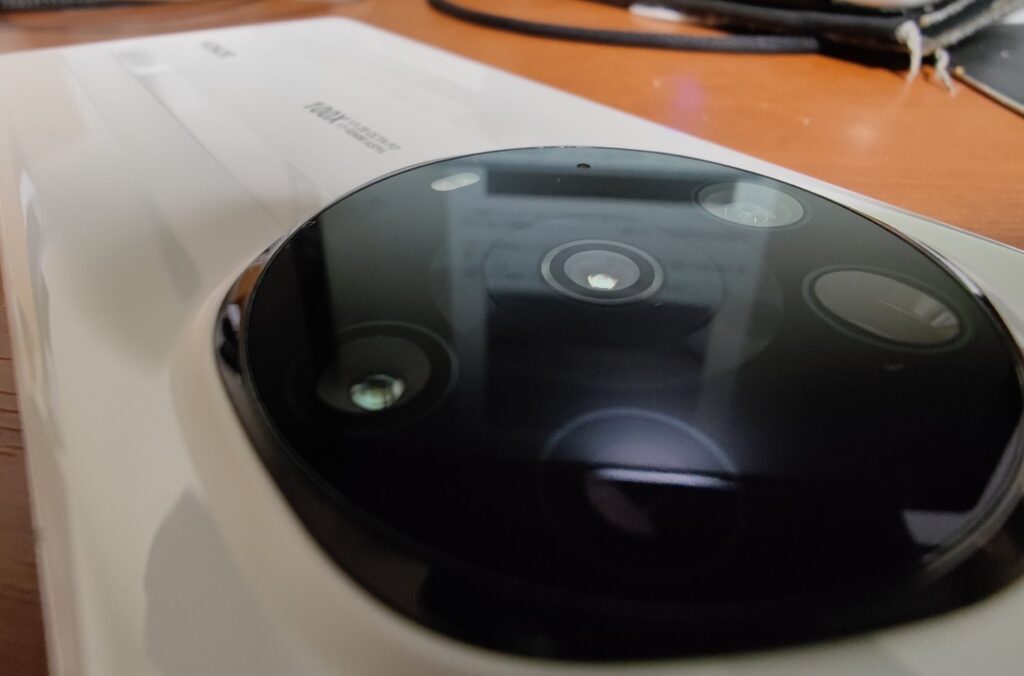
The texture and design of the back is really great. I think it might be my favorite of all the devices I’ve seen. I am impressed with the level of quality.
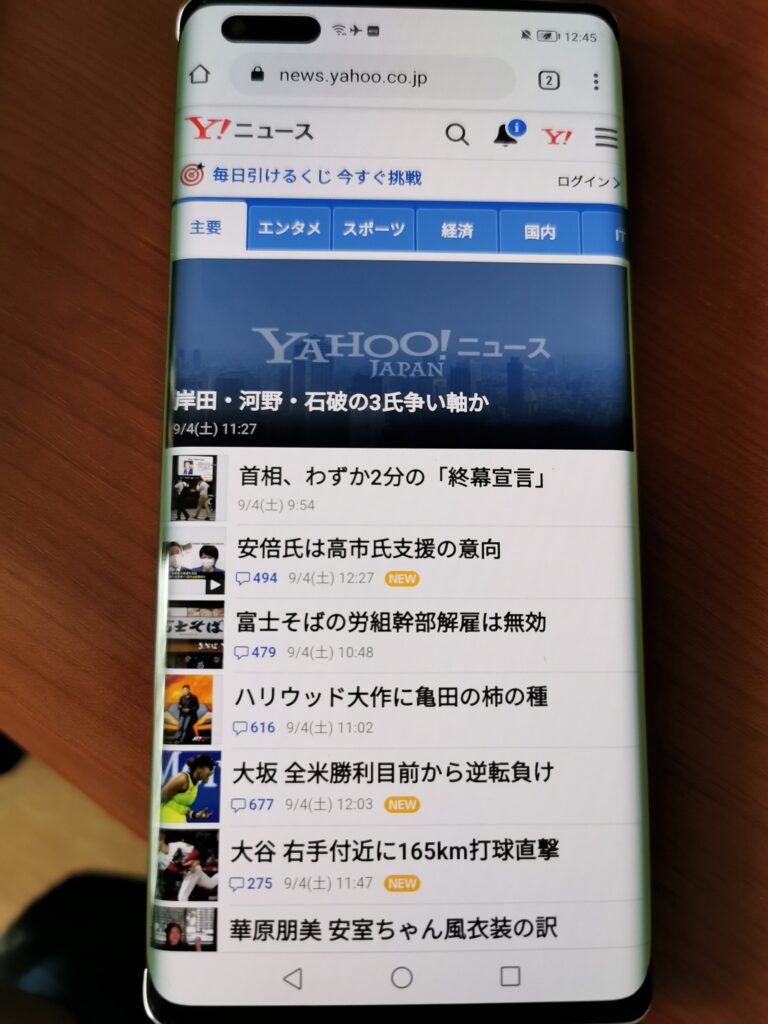
In contrast to the back, the display side is the worst. A large angled edge display combined with double punch holes. I don’t know if they are trying to increase or decrease the screen occupancy. As you can see in the second picture, it’s very difficult to see both ends. Why did they design it in such a way that it loses its practicality? It’s very questionable. I’m not a big fan of edge displays, but the edge angle of the Mi11 Ultra or Huawei P30 Pro doesn’t bother me that much. But this is just awful….
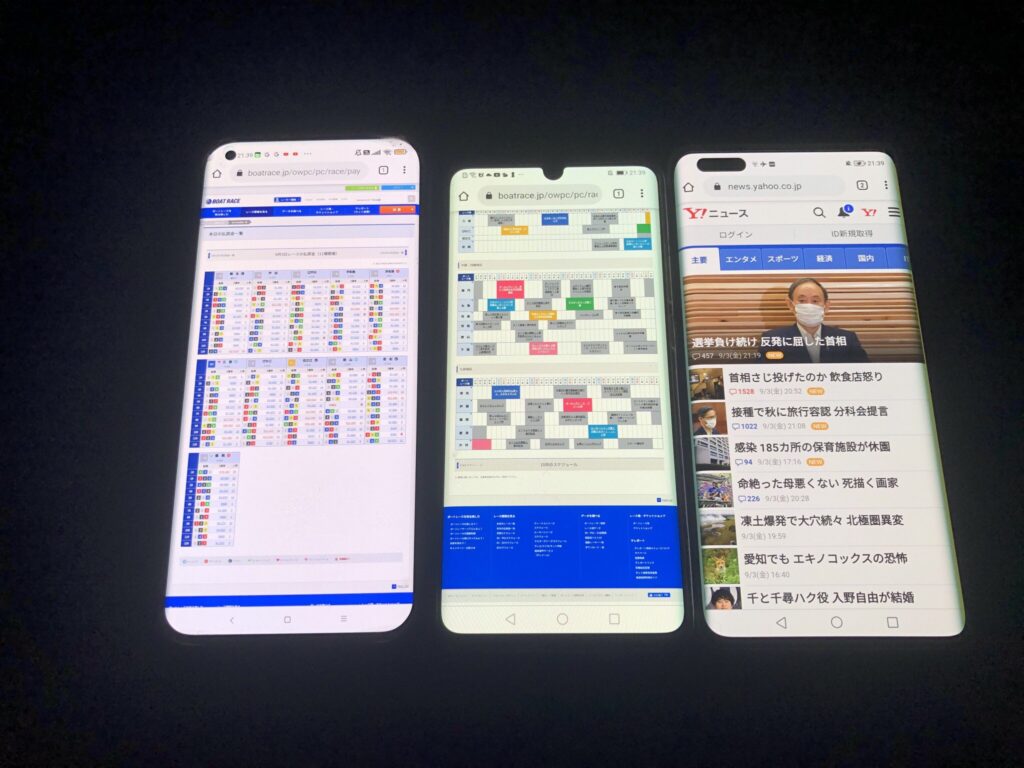
I lined them up in the dark with maximum brightness. From right to left: Mi11 Ultra, Huawei P30 Pro, and Magic3 Pro+. The colors of the Magic3 Pro+ are the best. In actual use, the Magic3 Pro+ feels the best when it comes to the color of the display.
AnTuTu Benchmark Score
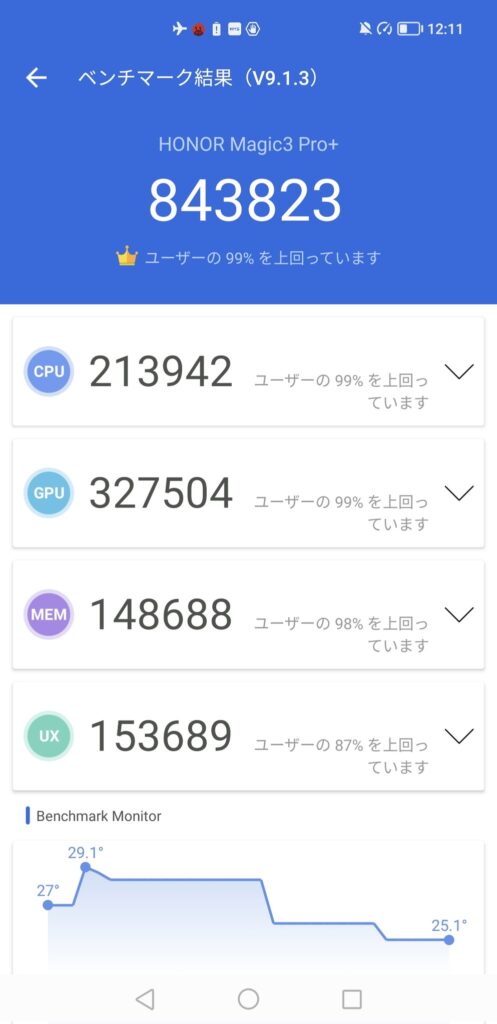
Here is the AnTuTu score measured in an environment where the device can be cooled down by the car’s air conditioner to maximize the device’s potential; Huawei and Honor devices have a feature called “Performance Mode” that increases power consumption and improves performance, which I turned on. It’s a Snapdragon 888+, and I got over 840,000 points. This is a higher score than the 888 unmarked, which is ideal.
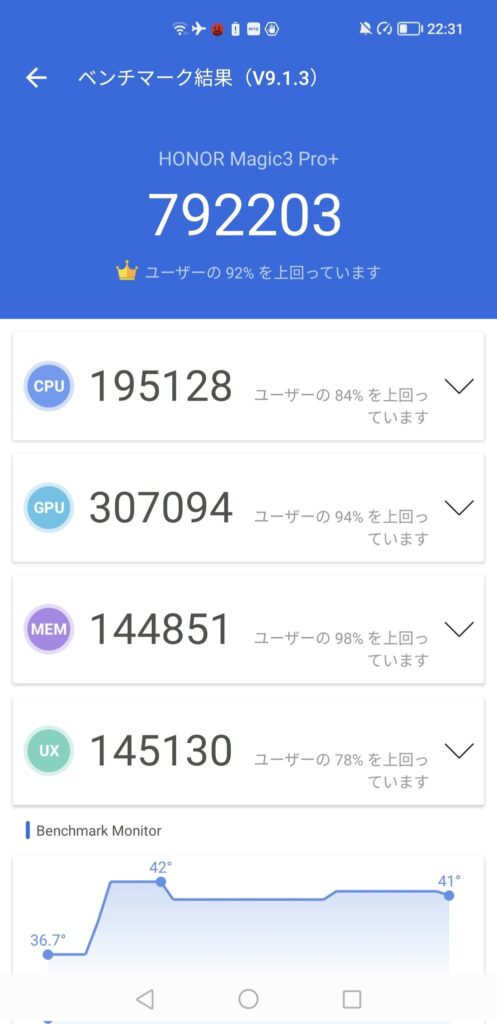
Here it is at room temperature with performance mode turned on. The heat generation was still at least as high as the unmarked Snapdragon 888. It is almost the same as the Snapdragon 888 device (Mi11 Ultra) measured in a similar environment.
My impressions
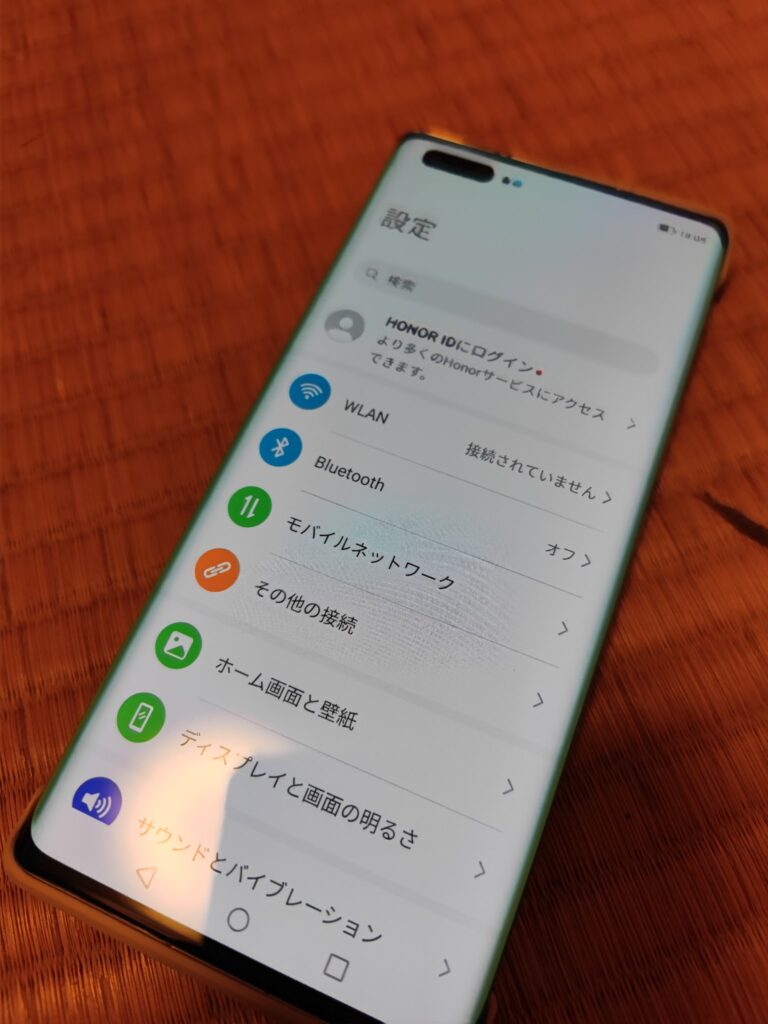
About UI
It has a custom OS called Magic UI, but the contents are almost the same as EMUI that Huawei phones have. I’ve been using Huawei phones for a long time, so I got used to the UI quickly. EMUI is still a great UI that is easy to use. It is very good in this regard. Also, the accuracy of the fingerprint recognition is very good. Even when my hands are wet, it usually works.
Heat and battery life
As for heat generation, I think it’s about the same as the Snapdragon 888. The battery capacity is 4600mAh, but I don’t think the battery life is very good. The 66W fast charging is fast, but it’s not compatible with major standards like QC and PD, so that’s a bit of a problem.
About camera and Photo Examples
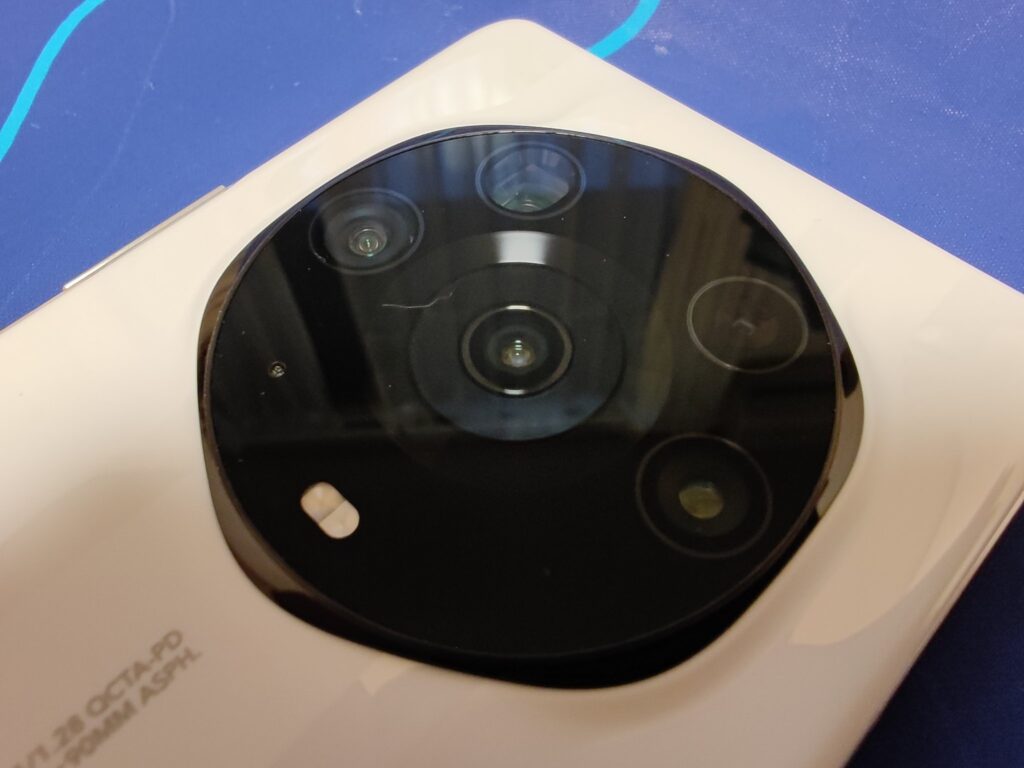
Now, it’s time to get down to the meat of the matter: the camera. In terms of specs, this is truly a phone with the best specs in the world. First of all, the main camera has a 50-megapixel IMX700 sensor, the same sensor used in Huawei’s flagship models, the P40 and Mate40 series. However, while the Mate40 and P40 series had the RYYB color filter array, the Magic3 Pro+ has the RGGB array, the same as other manufacturers. So it’s practically a new image sensor. The Magic3 Pro+ is the only one that has four sensors with more than 50 megapixels, and it uses the OV64B sensor for monochrome, ultra-wide angle, and telephoto. Huawei’s software is also said to be the best in the world, so what happens when you combine the best software and hardware? Let’s take a look at some examples.

Let’s start with the ultra-wide angle camera. This sensor also serves as a macro camera.
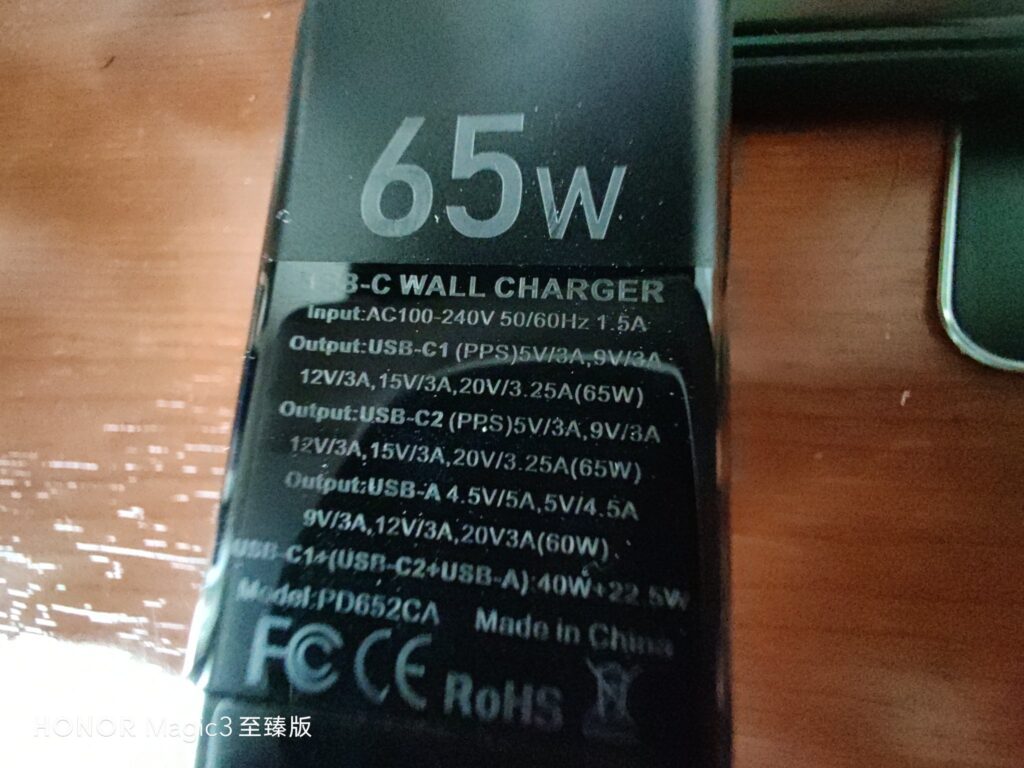
This is what the macro looks like. The macro performance is quite good, with the camera focusing quite close. However… I can’t switch from auto mode to macro mode automatically! Why??? Huawei P30 Pro can do this. It’s so inconvenient.
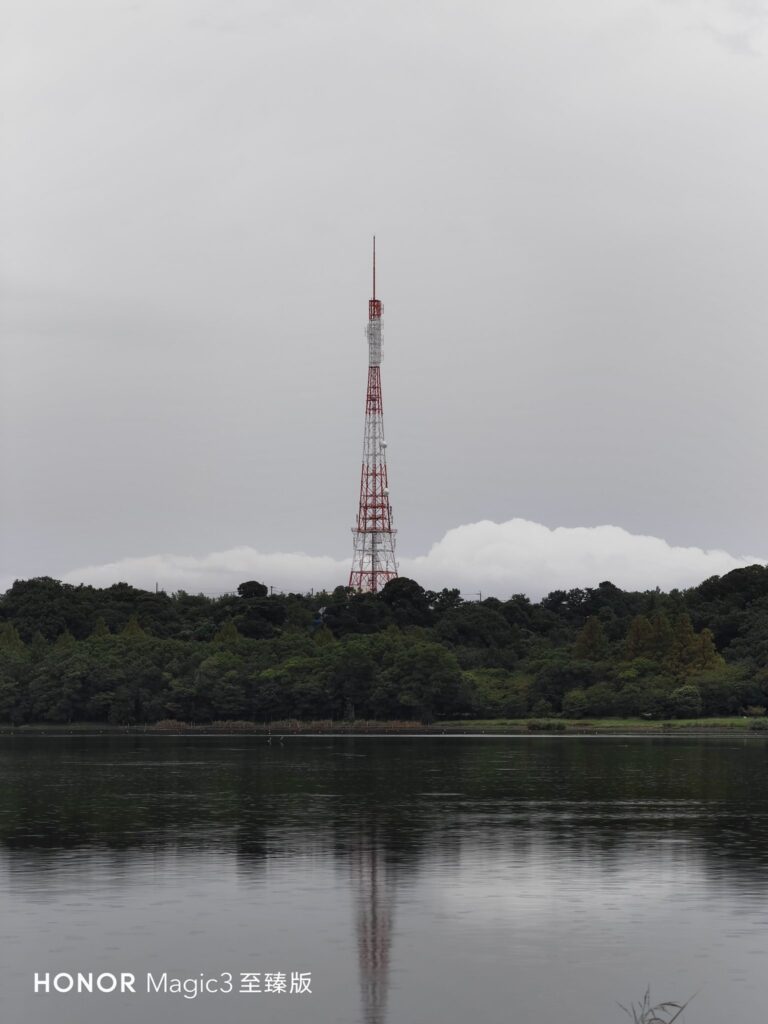
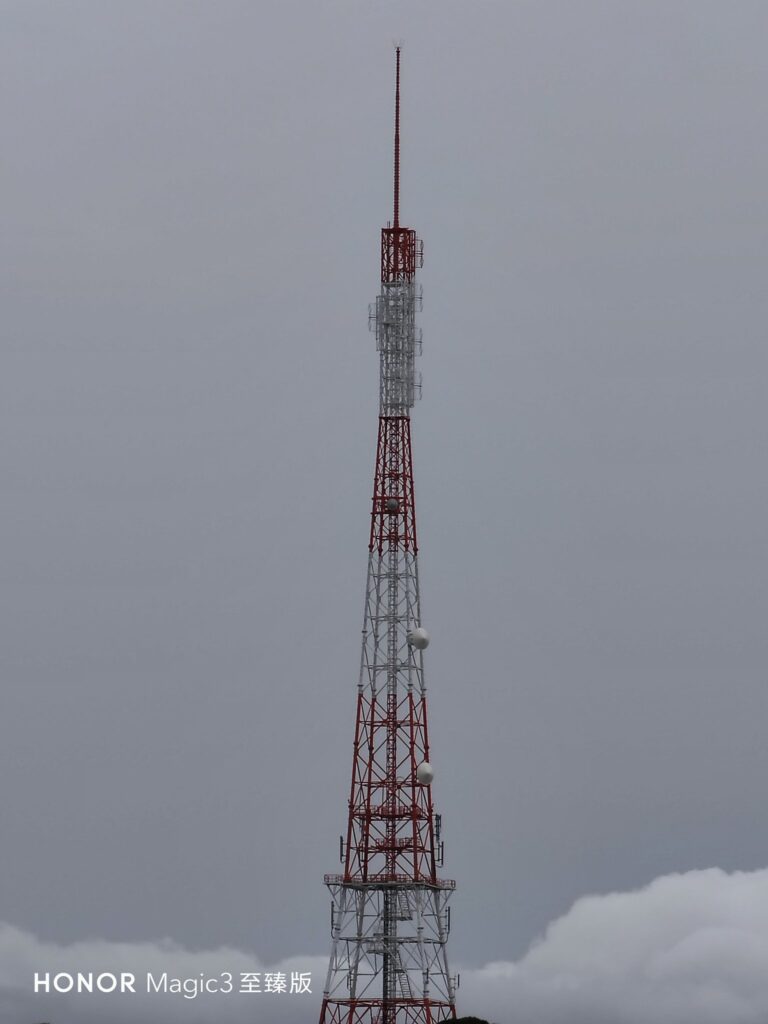
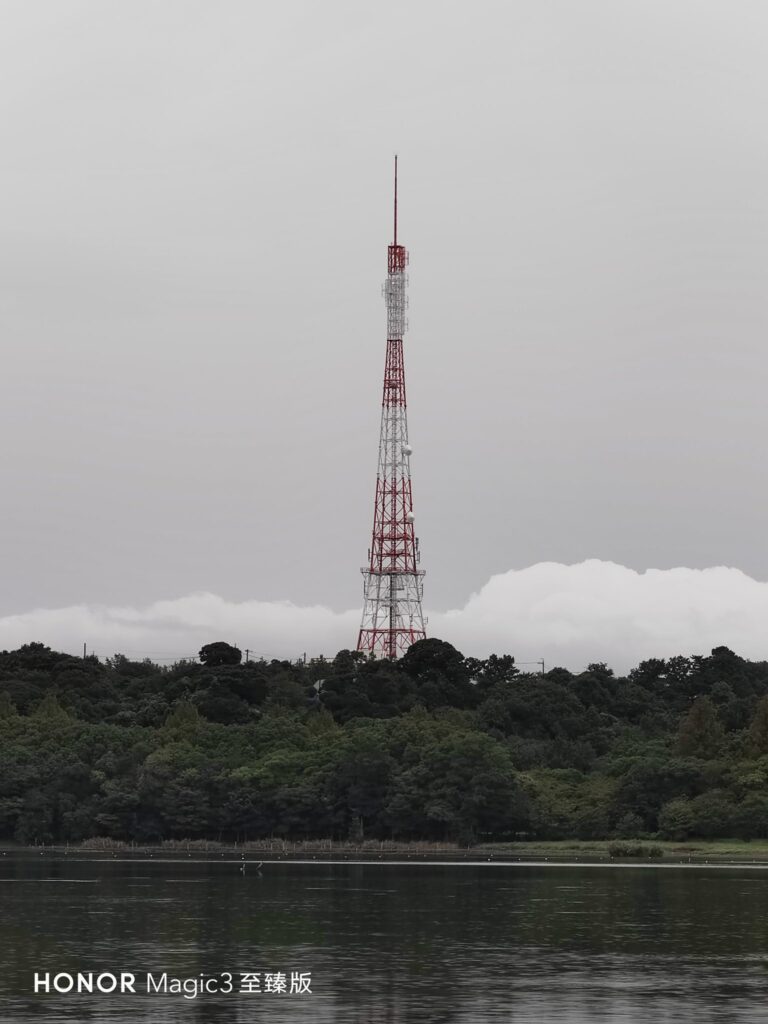
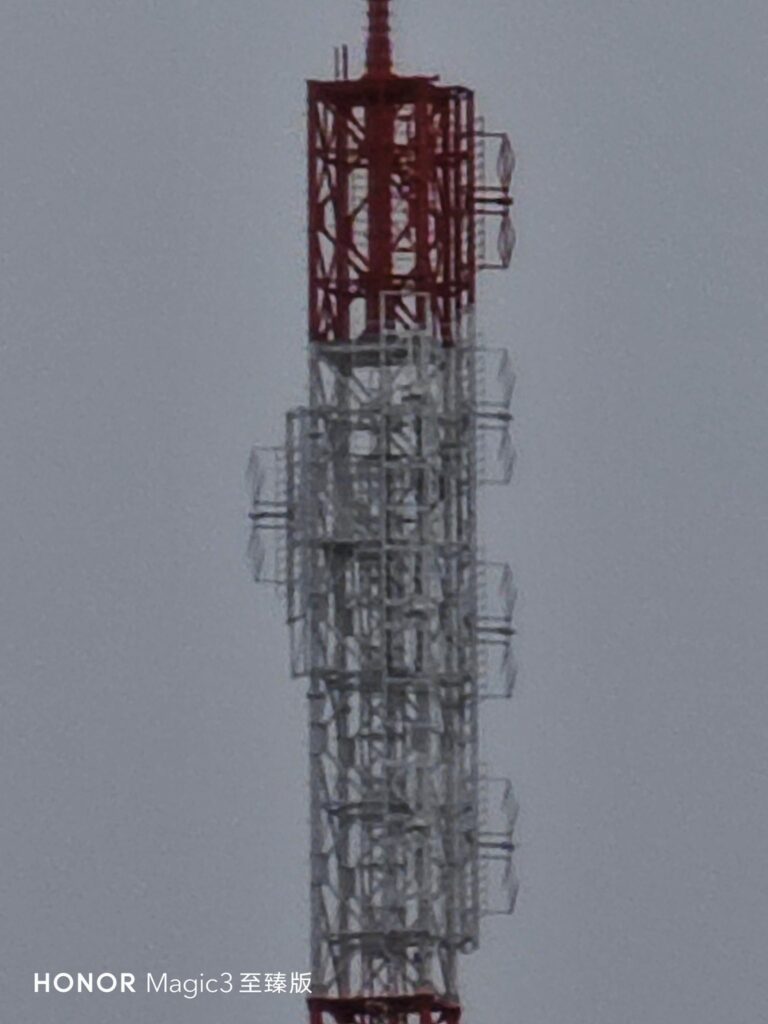
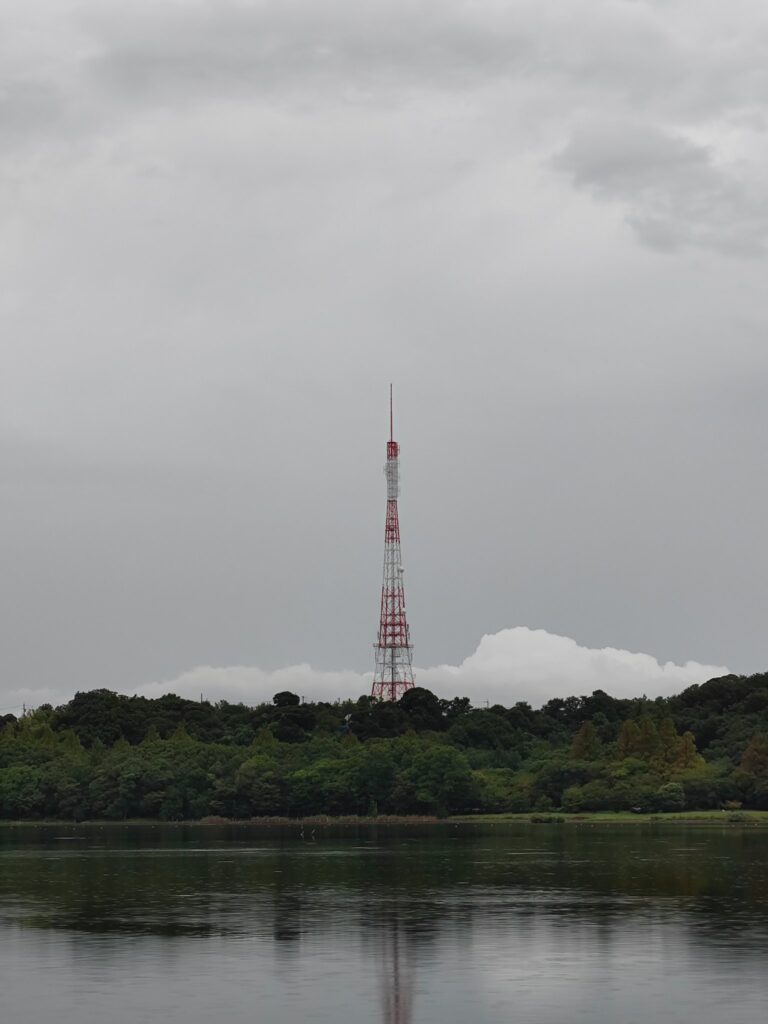
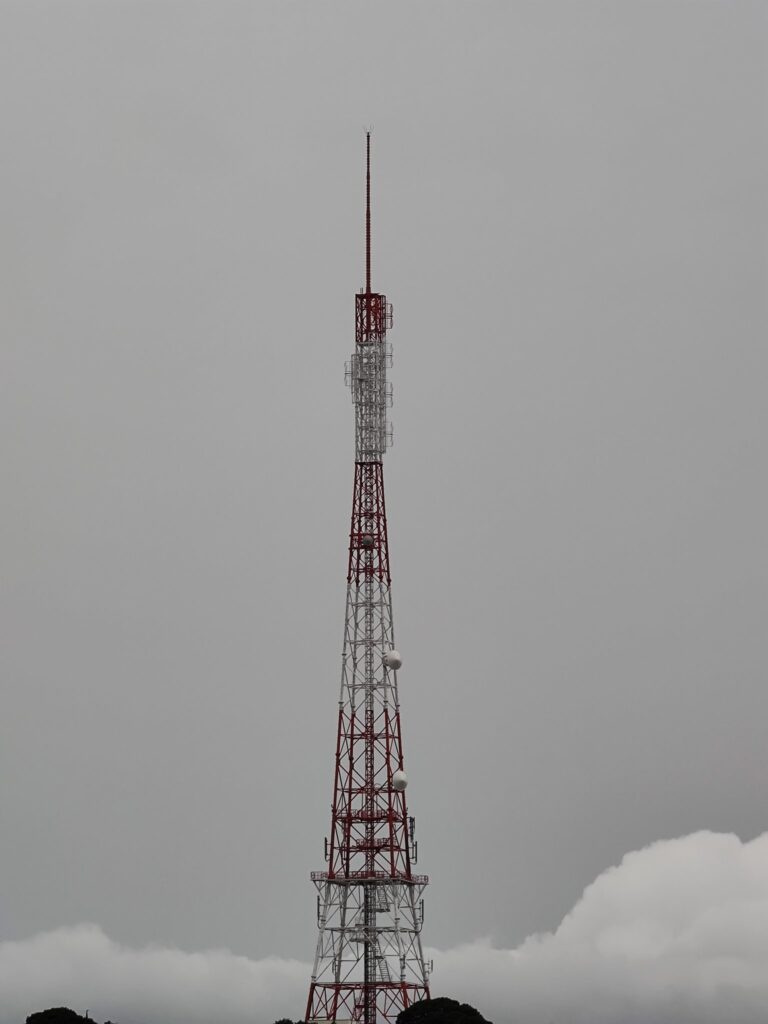
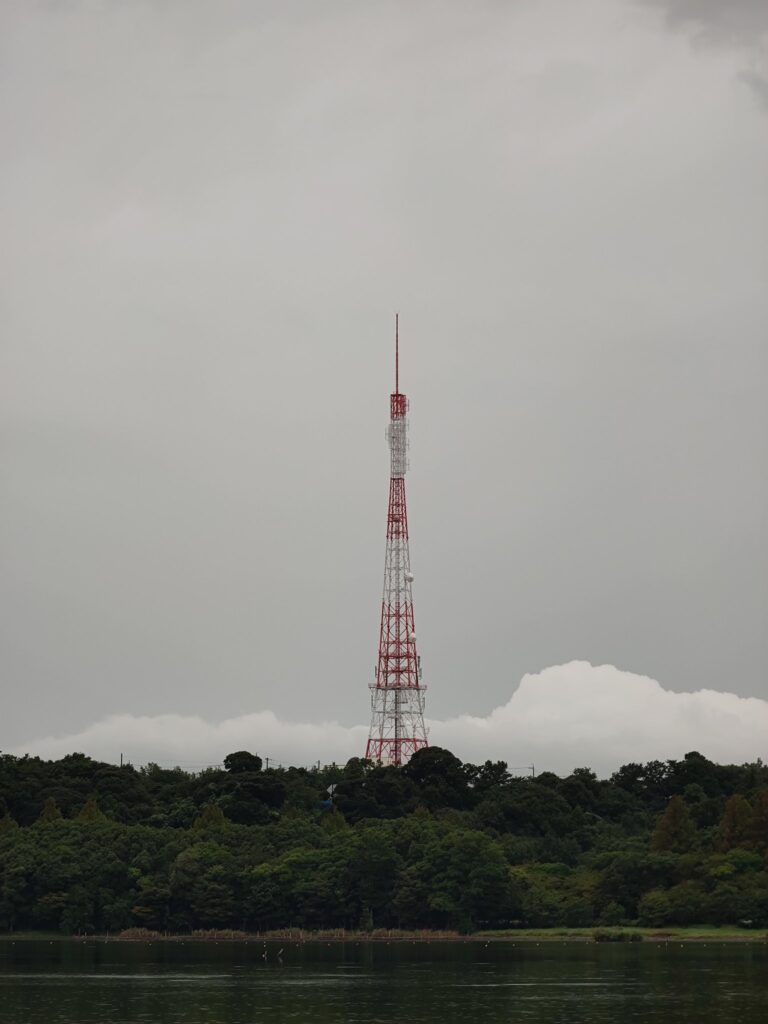
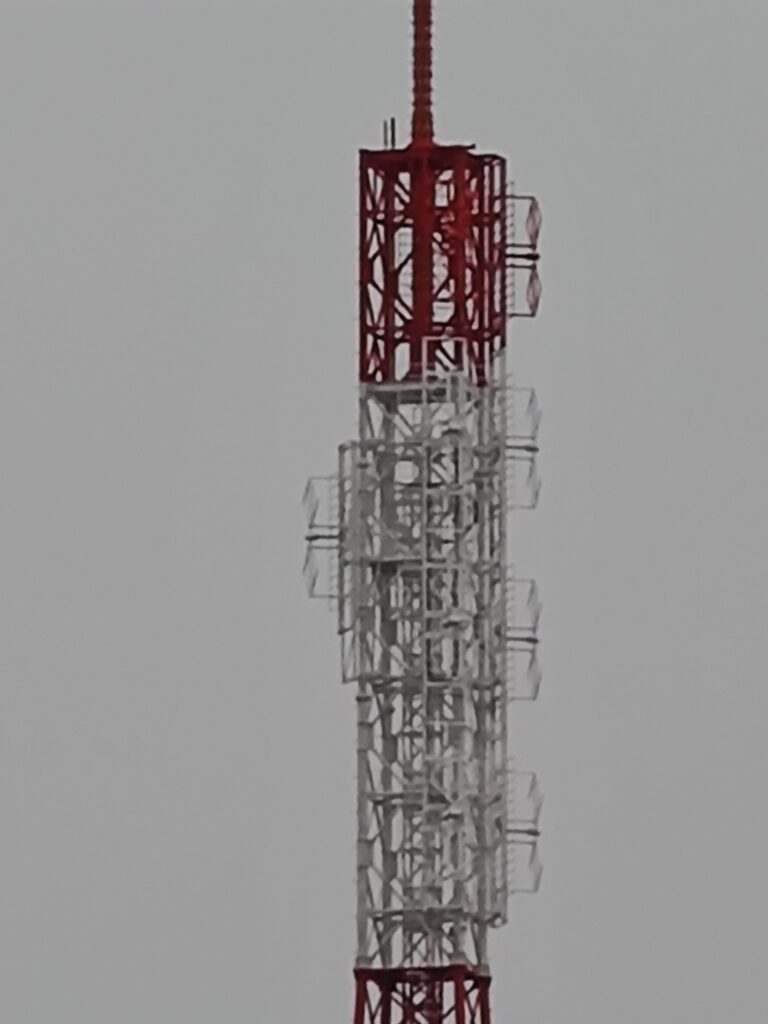
The top four photos were taken with the Magic3 Pro+ and the bottom four with the Mi11 Ultra. Both are 3.5x, 5x, 10x, and 50x. I don’t see a big difference between them, but the colors are slightly different.

Check out the color and bokeh. Both are good. The colors are rather natural, and thanks to the ToF sensor, the camera is in perfect focus. However, the bokeh in the background seems a little unnatural.

This is chicken nanban, a dish served by a very popular Japanese restaurant in Japan. In the past, when I took pictures of rice with my Huawei phone, it turned out yellowish, but this is not the case. I think it’s not bad.


These are cute birds. On the left is the Magic3 Pro+ and on the right is the Mi11 Ultra. Both photos were taken with 20x zoom. As you can see when you zoom in, the Magic3 Pro+ is a bit noisy or not so pretty, while the Mi11 Ultra has some minor detail crush like a coloring book, but I think Mi11 Ultra photo is nicer by any measure.


I was a little disappointed with this one. On the left is the Magic3 Pro+ and on the right is the Mi11 Ultra. On the Magic3, the sky is completely white and the bottom is black. The Magic 3 Pro+ doesn’t have an HDR on/off switch, but the Mi11 Ultra has an HDR on/off switch and this photo was taken with it on.
From here on, I will post more and more examples.
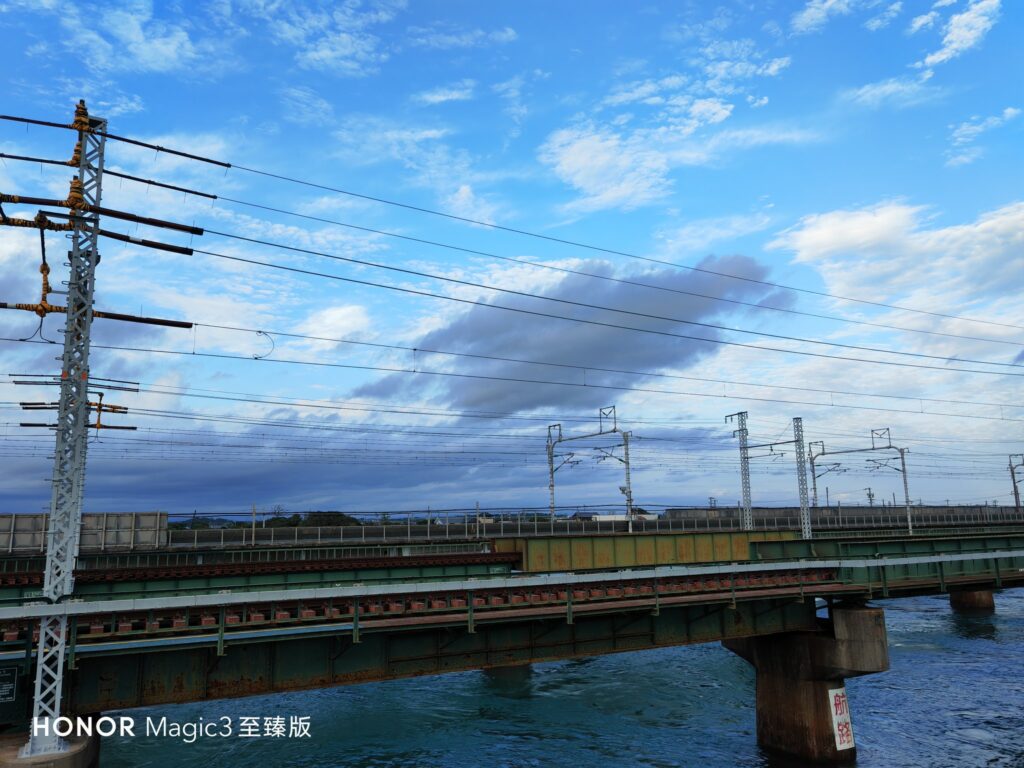
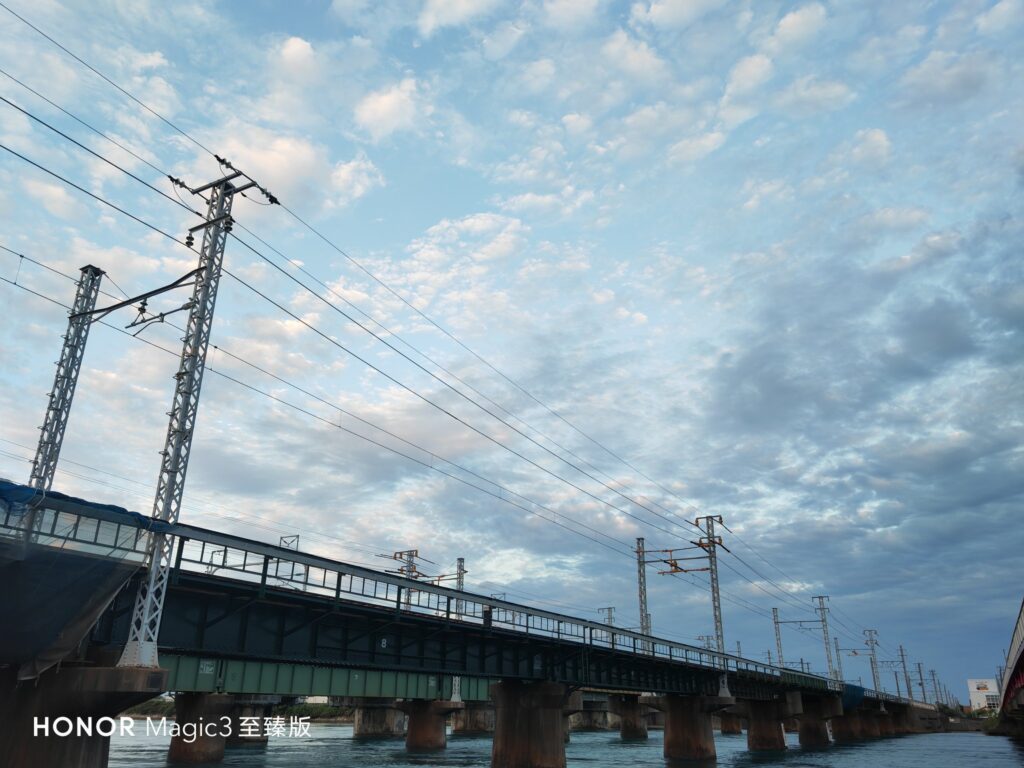


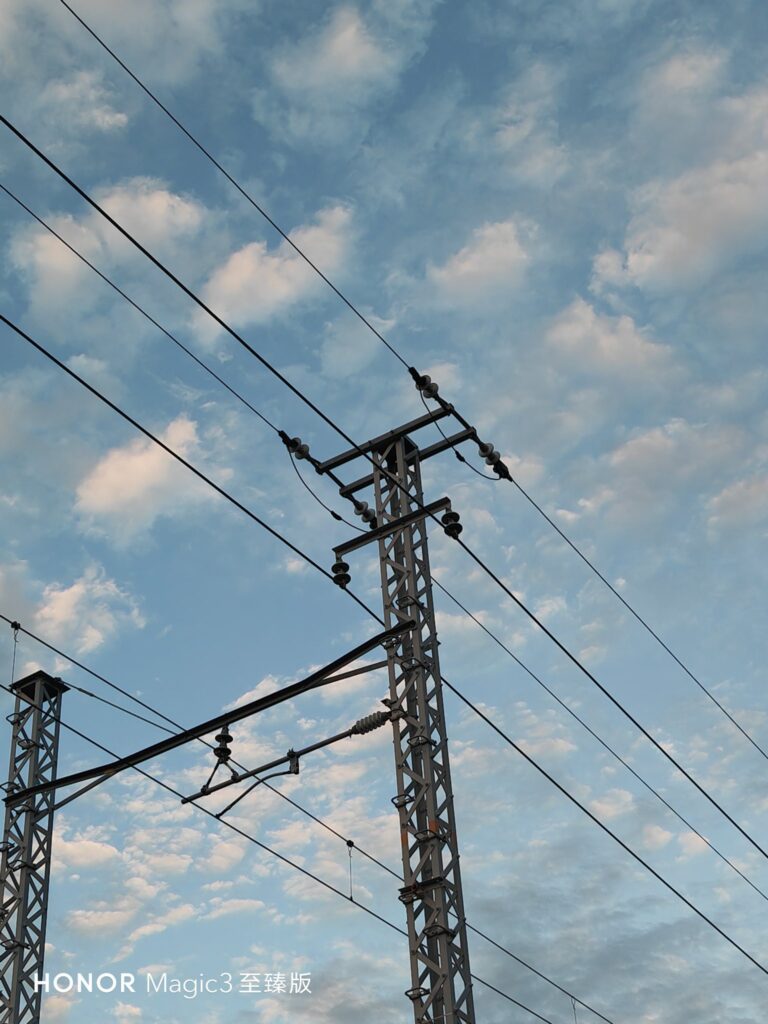


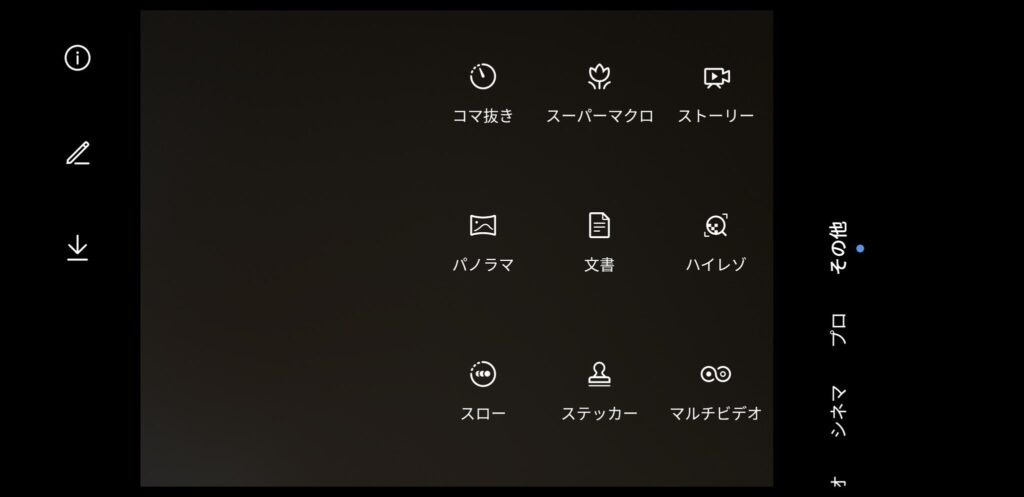
This is the only mode that can be used. As mentioned above, macro mode can only be used by selecting “Super Macro” from “Other”. That’s inconvenient. There is no starry sky mode, long exposure mode, time lapse mode, etc. Compared to the P30 Pro, which is two years old, it has fewer features.
Summary: Did Huawei’s genes not carry over?
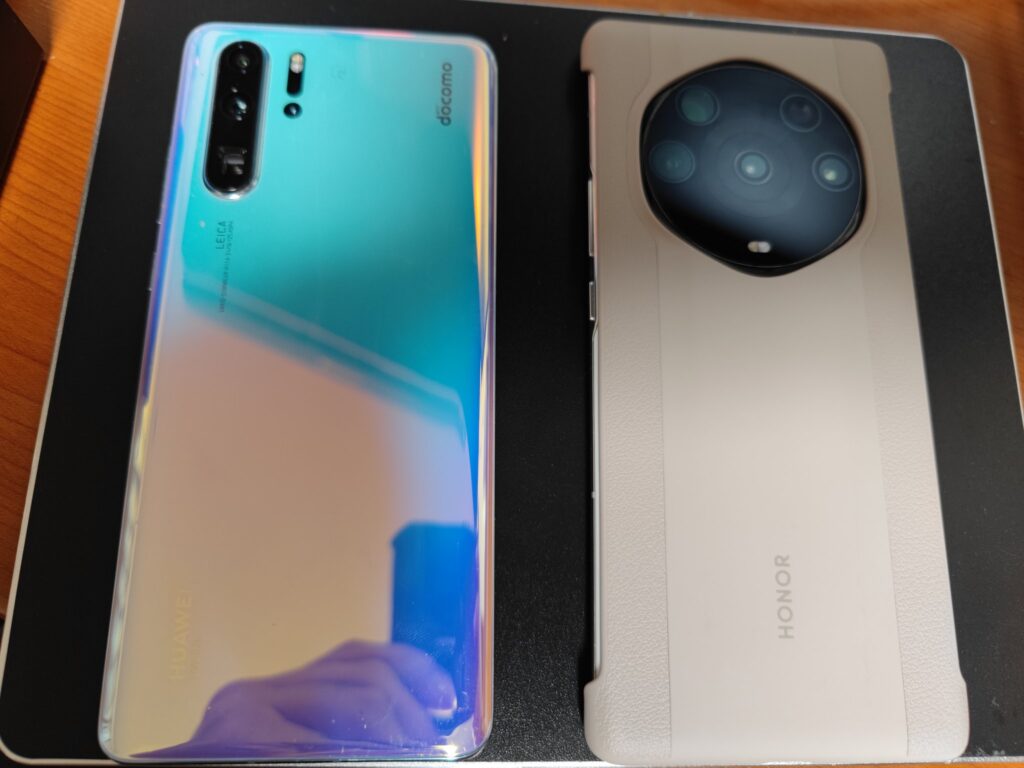
I thought that Honor would take over Huawei’s smartphone business after Huawei failed to include a SoC with 5G modem in the P50 series, which was made after the sanctions started in earnest. But it seems that I was wrong. The camera in particular is a far cry from Huawei’s previous great cameras. There is no doubt that the P30 Pro, which is much weaker than the Magic3 Pro+ when it comes to hardware, can take better pictures. The Magic3 Pro+ is far inferior to the P30 Pro’s two-year-old flagship in terms of hardware, HDR, and low-light performance. I was very excited about this Magic3, I thought we would finally see a Huawei device from a world line that was not sanctioned. So I got it before everyone else and was one of the first to try out the camera. To be honest, I was very disappointed with this phone because my expectations were very high. Unfortunately, the technology and know-how that Huawei has accumulated cannot be said to have been fed back to the Honor Magic3 Pro+, and unfortunately, I think they had to start from scratch. I don’t know how many years it will take to catch up with Huawei’s technology, but I have a little bit of hope for the future of HONOR.


